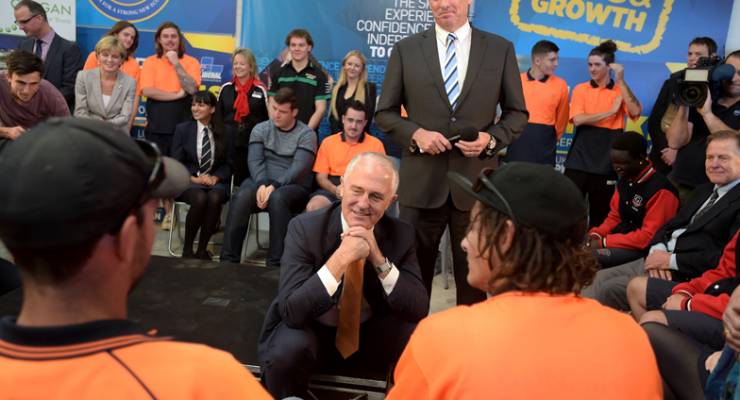
There’s plenty to choose from for both economic pessimists and optimists in the last 24 hours, with the International Monetary Fund issuing a preliminary report on Australia, and Reserve Bank governor Phil Lowe offering his own perspective in a speech in Melbourne last night. The overall tone might have been quite different, but they have an important point of intersection.
The IMF team has been talking to the likes of Federal Treasury and the Reserve Bank, market economists and think tanks and issued a statement that will turn into a formal so-called Article IV report on Australia due in early 2017. “Australia has been confronted with symptoms of the ‘new mediocre,’ albeit to a lesser extent than in almost all other advanced economies,” the IMF says. “House prices and household debt ratios have risen further in the low-interest environment post-GFC, up from already high pre-crisis levels,” along with “other macro-financial vulnerabilities”, “the fall in the unemployment rate has likely overstated the improvement in labor markets”. Moreover “the tax system provides households with incentives for leveraged real estate investment that likely amplifies housing cycles” (that’s negative gearing, which the government thinks is just fantastic).
It also says the government’s plan to return the budget to surplus within five years is reasonable, but too much of the budget improvement is focused on the next two years. “Such an ambitious pace could be counter-productive in the current phase of the recovery. Australia has the fiscal space for undertaking more gradual consolidation to a balanced budget.”
Even so, “the balance of risks has improved but is still tilted to the downside” for the economy overall, and we’re doing better than most other economies, despite the “new mediocre” quip.
The warnings on property and housing prices were of course picked up by the excitables among the commentariat — both in the markets and the media — meaning they also missed the far more relaxed speech delivered to the annual CEDA dinner in Melbourne last night by Reserve Bank governor Phil Lowe, which focuses on fiscal and financial buffers, but only as an insurance policy.
“Our economy is adjusting better than many predicted to the unwinding of the mining investment boom. Over the next year, we are expecting the economy to grow at around its potential rate, before picking up a bit in the following year… the decline in the exchange rate over recent years has assisted a number of industries. Survey measures of business conditions and consumer confidence generally remain above average. The prices for our commodity exports have also lifted since the start of 2016. As a result, for the first time in some years, Australia’s terms of trade have moved higher. This will help to boost incomes and fiscal revenues. Despite the uncertainty in the world, we should be looking forward to the future with some optimism.”
It’s a markedly different tone from Lowe to that of the IMF team. But both agree on a key point: infrastructure. Lowe’s comments about fiscal policy note:
“It is worth pointing out that this does not preclude government spending on infrastructure, where this is backed by a strong business case. Such spending can provide support for the economy and can help generate the productive assets that a prosperous economy needs. Done well, infrastructure spending is not inconsistent with establishing a better balance between recurrent spending and revenue.”
And the IMF correctly points out it’s the states who are doing the heavy lifting on infrastructure in Australia, not the Commonwealth (especially in NSW, where the Baird government has committed to spending tens of billions of dollars over the next decade or more): “A more sustained, multi-year increase in spending on efficient infrastructure also at the Commonwealth level would be desirable, considering that Australia has infrastructure needs and fiscal space, the funding environment is favorable, and that the expected return to full employment is gradual.”
And the benefit of infrastructure spending isn’t confined to the present — it will come in handy if there’s a downturn, because “unlike in previous downturns, monetary policy may soon be constrained by the lower bound on nominal policy rates. Contingency plans and a pipeline of infrastructure projects would help in reducing the implementation lags involved in undertaking fiscal stimulus.”
Yet the Turnbull government appears wholly resistant to this argument, as the Abbott government before it was. It’s crazy stuff — the Coalition has significantly increased spending as a proportion of GDP and blown out the budget deficit, but primarily for recurrent spending, while it has trashed investment in renewables infrastructure and the NBN.
It doesn’t make sense no matter what your economic ideology.







So now we need to “save the economy”?
Strange, I thought the economy was “ticking along just fine” as GDP “growth” is above expectations and the “unemployment rate” keeps falling.
That’s what the statistics tell us, and statistics CAN’T be wrong (just ask a US election pollster). It’s not like we’ve been “flying blind”:
http://www.abc.net.au/news/2016-11-15/labour-pains-for-unemployment/8028020
The Andrews govt is spending heaps too, while the support given from hockey’s policy has been withheld unlike the support given to the nsw govt.